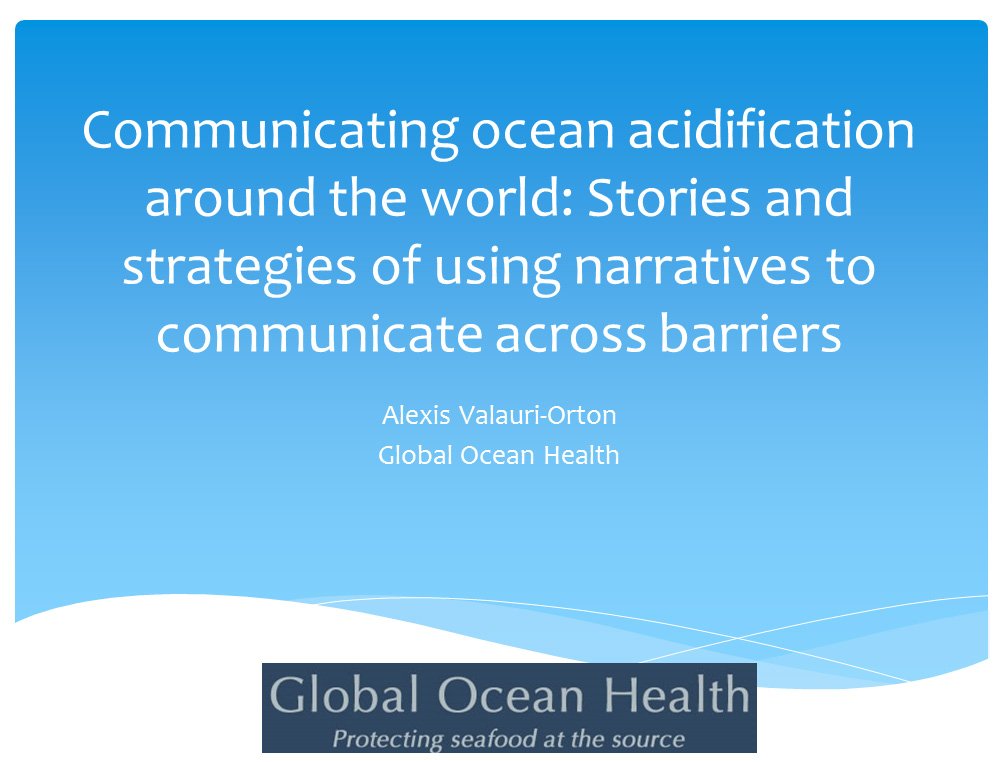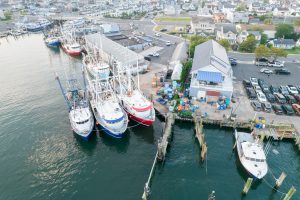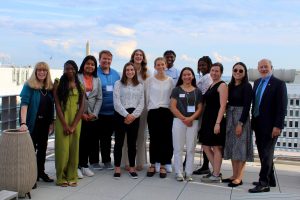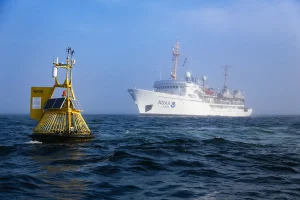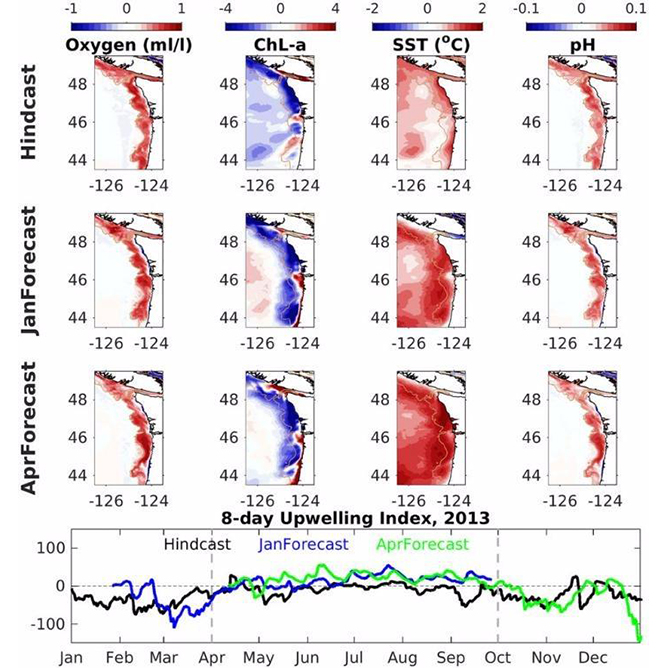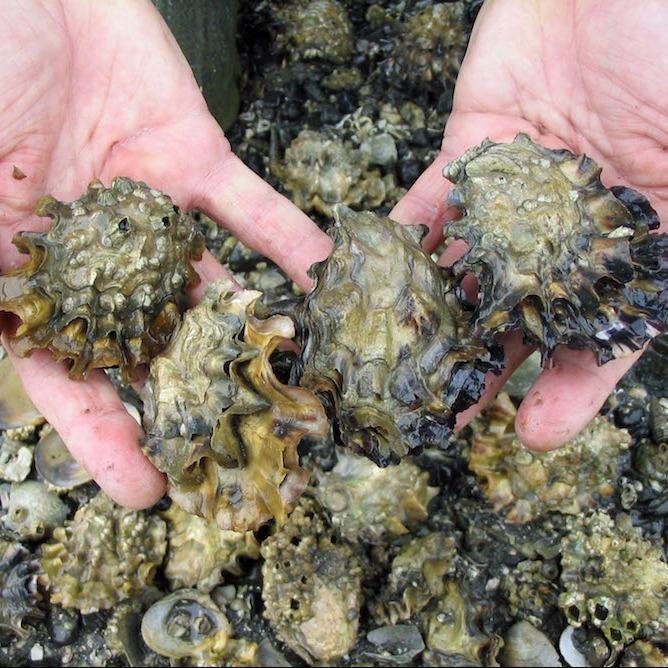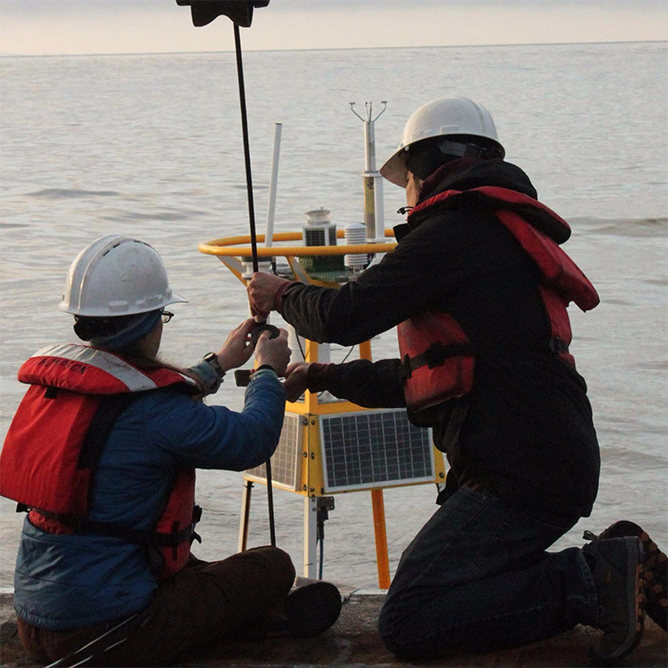SOARCE Webinar
Presenter: Alexis Valauri-Orton, Global Ocean Health
Primary Audience: Informal Educators, Stakeholders
Date/time: Wednesday, April 2nd, 4pm ET (1pm PST)
Between July 2012-2013, Alexis traveled on a Thomas J. Watson Fellowship studying how human communities in Norway, Hong Kong, Thailand, New Zealand, the Cook Islands and Peru might be affected by ocean acidification. She interviewed, lived and worked with hundreds of members of marine dependent communities, investigating how they valued resources threatened by ocean acidification. The vast majority of the community members she worked with had no knowledge of ocean acidification and poor ocean literacy.Over the year, she developed tools to communicate and contextualize this complex science issue across language and cultural barriers. She found the most effective method of communication was to explain the science of ocean acidification in a personalized, narrative format, drawing from the lives of her audience to make connections between ocean acidification and resources and practices they value.In this webinar, she will share examples of how she listened and learned from her audiences and structured communication platforms for diverse communities, ranging from Seventh Day Adventists in the Cook Islands to scallop farmers in Peru. She will explain her methodology and discuss how formal and informal educators can design narrative tools suited for their own audiences.
About the Speaker:
Alexis Valauri-Orton was born and raised in Seattle and harbors a lifelong love of all things marine. Whether searching for crabs under rocks or exploring planktonic gene expression in the lab, she has always loved learning about the ocean. In 2006, when she first heard about ocean acidification and its impacts on marine life, her fascination took on a sense of urgency that has shaped her life since.
From July 2012-2013, she traveled the world on a Thomas J. Watson Fellowship, investigating human narratives of ocean acidification in Norway, Hong Kong, Thailand, New Zealand, the Cook Islands, and Peru. Over that year, she traded her lab coat for a pair of gum boots, experiencing firsthand the role marine resources play in coastal communities. By studying acidification in such diverse communities, she discovered the importance of understanding and navigating the social structures that shape our vulnerabilities and responses to environmental issues.
About the Speaker:
Alexis Valauri-Orton was born and raised in Seattle and harbors a lifelong love of all things marine. Whether searching for crabs under rocks or exploring planktonic gene expression in the lab, she has always loved learning about the ocean. In 2006, when she first heard about ocean acidification and its impacts on marine life, her fascination took on a sense of urgency that has shaped her life since.
From July 2012-2013, she traveled the world on a Thomas J. Watson Fellowship, investigating human narratives of ocean acidification in Norway, Hong Kong, Thailand, New Zealand, the Cook Islands, and Peru. Over that year, she traded her lab coat for a pair of gum boots, experiencing firsthand the role marine resources play in coastal communities. By studying acidification in such diverse communities, she discovered the importance of understanding and navigating the social structures that shape our vulnerabilities and responses to environmental issues.
Alexis has a BS in Biology and Environmental Studies from Davidson College, in North Carolina. While there, she was awarded several grants and scholarships to fund environmental education projects. She currently works as Outreach and Editorial Associate at Global Ocean Health, in Seattle, and is contracted with the Suquamish Tribe as an ocean acidification outreach and communication specialist.
</ br>
